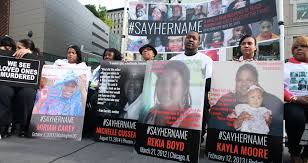It’s the end of her grant cycle, and Kimberlé Crenshaw is presenting her accomplishments to her funder, hoping to secure continued support. Crenshaw is talking about her work with the African American Policy Forum (AAPF), and it’s work that she’s proud of. She’s certain the pitch is going well. Then the funder responds that, while she’s impressed, she has decided to reduce her funding of the AAPF, because she is going in a different direction. “What direction is that?” Crenshaw asks, and the woman leans in, evidently excited, and says “Intersectionality!”
It’s been 26 years since Crenshaw coined the term “intersectionality” in her groundbreaking essay, “Mapping the Margins: Intersectionality, Identity Politics, and Violence Against Women of Color.” Now, in 2017, she opens her keynote speech for the Women’s Funding Network’s “#WomenFunded2017” event with this story to demonstrate both how impactful the term has been, and how distorted it has become. Intersectionality is a constant presence in discussions of social justice, diversity, and equity. It has transformed the standards for acceptable social justice initiatives and discussions about them. However, its broad applicability seems to have worn away the nuance and specificity she created it to hold, diluting “intersectionality” into a stylish euphemism for “it’s all complicated.” And now, that confusion has reached a point where Crenshaw’s funder feels comfortable using it to oppose funding the very work it was created to highlight the need for.
As Crenshaw says, “That’s not a good story” for anyone involved—the funder, the grantee, and certainly not the people the grant is intended to help. So, with a small smile, and a quick, direct manner, Crenshaw walks us through the real meaning of intersectionality again.
Crenshaw explains that intersectionality is a way of framing problems of discrimination, a conceptual tool to help us identify what is happening and who is involved. This is more important than it might sound— she suggests that far too often, using bad frames obscures even the basic facts of discriminatory incidents. When Emma DeGraffenreid was rejected for a factory job at General Motors, she found that every other Black woman who had applied had been rejected too. Yet her lawsuit for discrimination was denied, on the basis that some Black people were hired, and some women as well. The court wouldn’t acknowledge that Black women were being systematically denied employment because it’s framing of discrimination didn’t allow two types, race and gender, to be “combined.” It couldn’t even consider that racism might treat women differently from men, and sexism might act differently on Black women than on white women.
Looking at DeGraffenreid’s story intersectionally not only makes it clear that Black women experience legitimate, different forms of discrimination than white women or Black men, it expands our understanding of who is responsible for the injustice. Not only General Motors is at fault— the lawyers and judge are perpetuating inequality as well. And an intersectional frame expands further than this. Who created these bad frames for discrimination in the first place? Who designed research using those frames, collecting evidence to support them, and ignoring the evidence that challenged them? Who designed interventions, based on that research, that left out the groups most affected? And who funded all of that?
So far, Crenshaw’s stories and jokes have invited her audience to share her frustration. But now, the illusion of sharing a position with her drops. She’s telling us where we fit into a cycle of invisibility that has real consequences for the people we’re all supposedly trying to help, a cycle which forces her to explain those consequences over and over to a responding chorus of “Sorry, we didn’t know.”
As she finishes her explanation, Crenshaw brings us back together by closing her talk with another story. Leaving the broad realm of statistics and cycles, she tells the story of one woman, Vicky Coles McAdory, who became an activist with AAPF after India Beaty, a Black woman she was aunty-mama to, was murdered by police in Norfolk Virginia. Vicky passed away this September, but Crenshaw brings her back to life through her story-telling, and finally, through a video of Vicky discussing her purpose as an activist. “I refuse. I refuse as a woman, I refuse as a Black woman, I refuse as a human, to shut up any longer” Vicky declares. “I will stand up if it means my death. I will not stop speaking up until I have no voice.” Her words are a reminder of should lie at the heart of all the theorizing, bureaucracy, and performance of philanthropy: people, using their voices, their lives, and whatever they can to fight injustice.
Crenshaw’s talk can be found online at https://www.youtube.com/watch?v=4_gnxRlRf9c.
